Your trees and shrubs are incredibly valuable to your landscape and you want to keep them in the best health possible. Just like you’d care for your lawn with regular tasks like mowing, watering, and fertilization, you need to implement tree and shrub care tasks to keep your plants looking their best.
But what tasks require your attention?
We know that many homeowners aren’t sure how to care for trees and shrubs.
In fact, there’s even a misconception that trees and shrubs are mostly self-sustaining once planted…but this isn’t the case at all. If you want optimal performance (and the longest possible lifespan) out of your trees and shrubs, you must be caring for trees and shrubs regularly.
To help you get started, we’ve put together this handy guide on caring for trees and shrubs. Here’s everything you ought to know on how to keep trees and shrubs healthy in Ohio.
Table of Contents
- Tree and Shrub Soil Health & Fertilization
- Look Out For Tree and Shrub Diseases
- Prevent Tree and Shrub Pests
- Tree and Shrub Pruning and Trimming
- Watering Your Trees and Shrubs
- Hiring Tree and Shrub Care Services in Cincinnati, Dayton, Oh, and Northern Kentucky
Tree and Shrub Soil Health & Fertilization
We often find that people understand their lawns need fertilization. They know that fertilizer provides essential nutrients to your lawn that helps it perform its best. Well, the same is true for tree and shrub fertilizer.
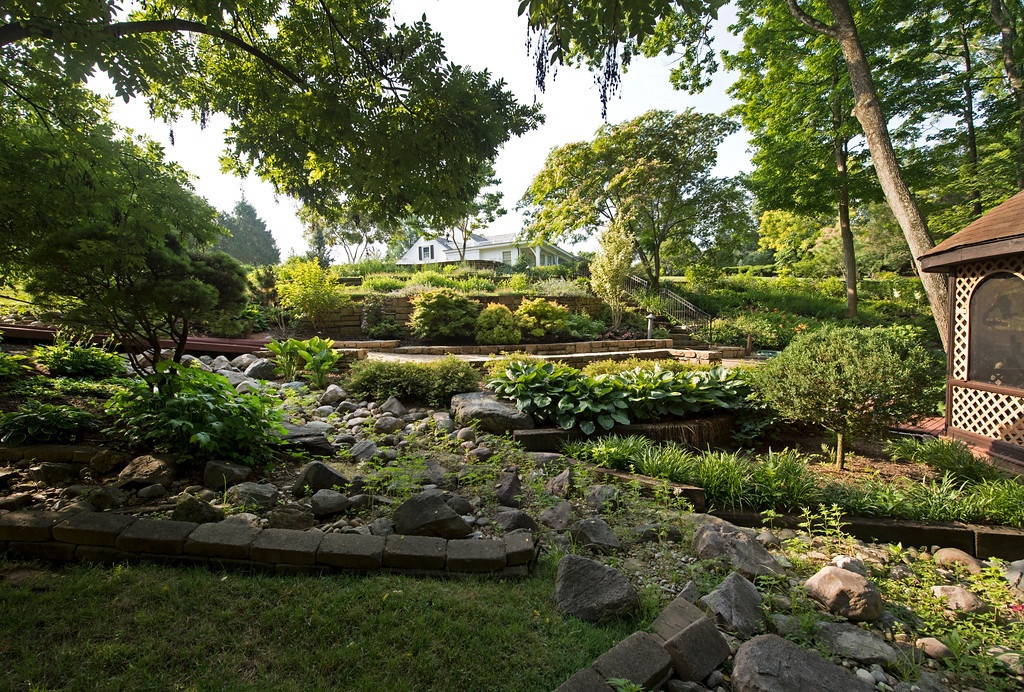
The residential soil that trees and shrubs are planted in at someone’s home is typically depleted of essential nutrients. They are often planted far from their native soils in a suburban environment where they must deal with a lot of new stressors.
It’s not like the soil that trees and shrubs thrive in out in the forest. That’s why fertilizing trees and shrubs provides that essential boost they need.
When to Fertilize Trees and Shrubs in Ohio
We know that you might be wondering how often to fertilize trees and shrubs. We approach tree fertilization twice a year, fertilizing evergreens in the spring and deciduous trees in the fall.
These two applications (part of our six-step comprehensive program) help to ensure that your trees and shrubs receive the nutrients they need, when they need them.
- In the Fall, tree and shrub fertilizer will help replace nutrients that have been used up during the prime growing season.
Specifically, Deep Root Tree Fertilization will replenish the ever-diminishing natural soil nutrients available to your trees and shrubs, giving you a healthier landscape that’s more vibrant and resilient. The best tree fertilizers have nitrogen, phosphorus, potassium, and also bionutritional materials that enhance root development.
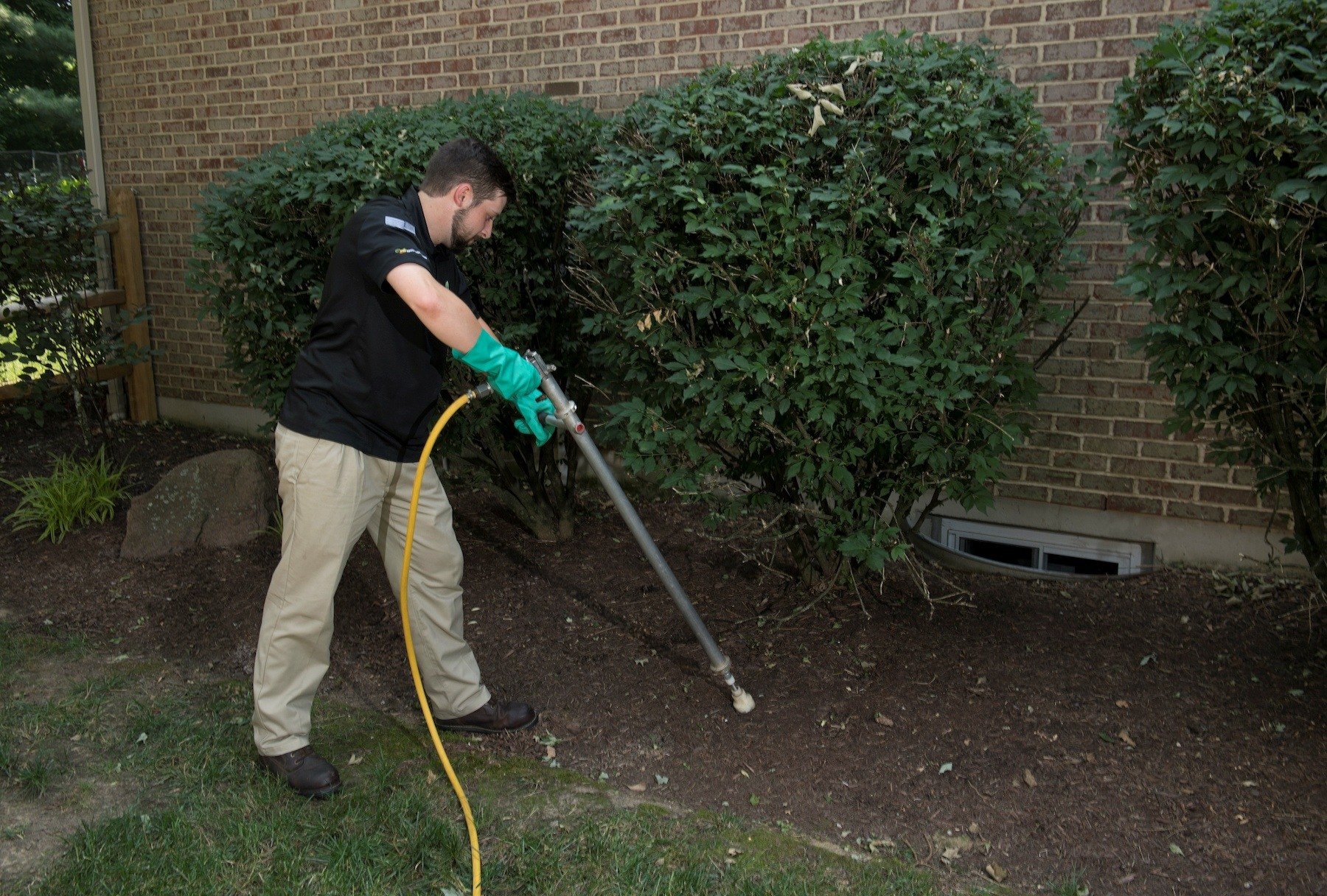
Fall fertilization is important as trees and shrubs prepare for winter.
-
In the Spring, tree and shrub fertilizer will help get your trees and shrubs off to a good start. When you fertilize your trees in the spring, they’ll establish a healthier, green canopy that will ultimately stay greener for longer. A well-fertilized tree should stay green into the fall season (at which point they will receive fall fertilization).
The key is to focus on ways to improve tree and shrub soil as it’s the soil that ultimately impacts the entire health of the tree or shrub. Your trees and shrubs must be growing in healthy and nutrient-rich soil in order to perform their best.
Look Out For Tree and Shrub Diseases
Even with proper fertilization, you need to be on the lookout for potential health issues with your trees and shrubs. Tree and shrub diseases can wreak havoc on your beloved plants.
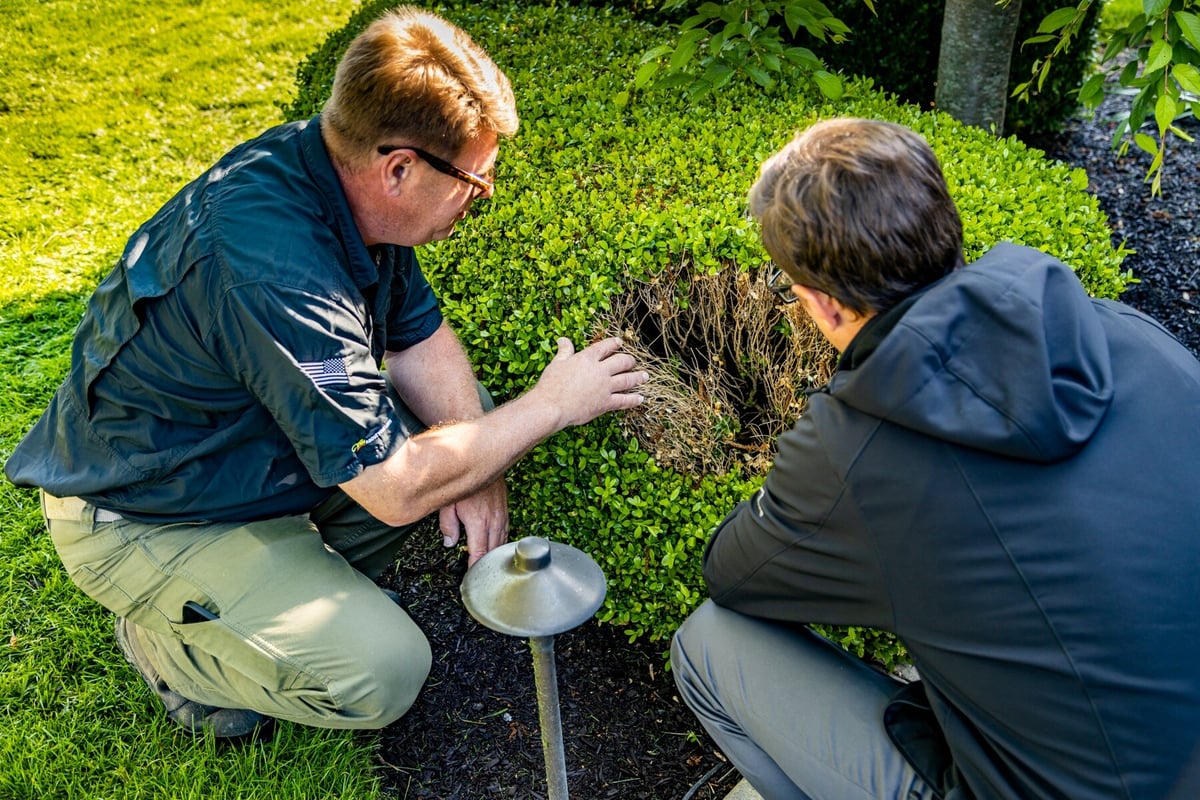
Let’s look at some of the potential issues that need to be on your radar.
Common Tree and Shrub Diseases in Ohio
Trees and shrubs face a number of foes in the landscape such as damaging tree and shrub fungus and diseases which are quite prevalent. Your plants may have been affected by these pathogens for some time, unbeknownst to you. Usually, it’s not until the problem has become advanced until a homeowner realizes there is a substantial concern.
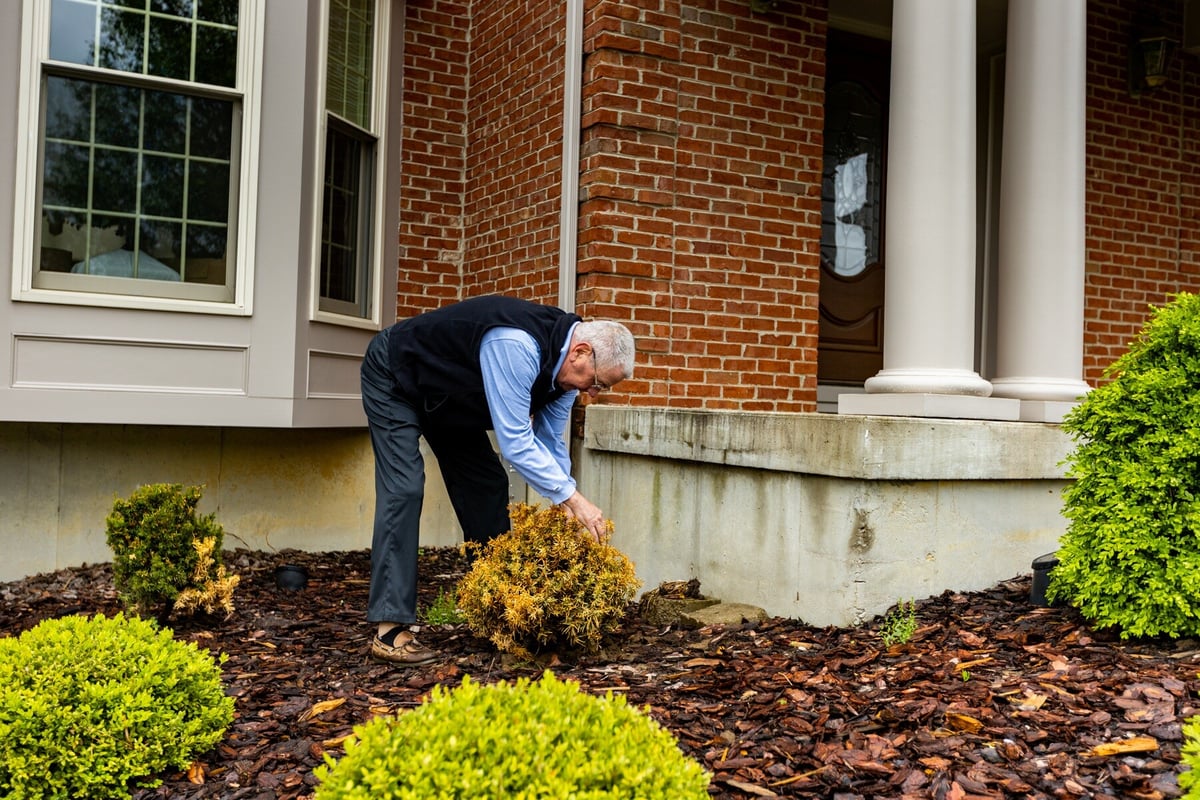
Here is a list of some of the more common tree and shrub diseases in Ohio.
- Needlecasts: Needlecast diseases are caused by fungi that infect the new needles of evergreens like Pines, Spruce, and Douglas Fir. When trees and shrubs are infected, the needles will change color and fall off.
- Powdery Mildew: This common disease gets its name for the powdery white substance that appears on an infected tree’s leaf surface.
- Cedar Apple Rust: This fungal disease also occurs on apple and crabapple trees, though it may spread to various junipers and red cedars.
- Thousand Cankers Disease: This disease is caused when Walnut Twig Beetles, which carry a fungus, tunnel into the bark of walnut trees and cause small “cankers” to form. Over time, if your tree is attacked repeatedly, it can ultimately kill the tree.
- Anthracnose: This group of related fungal leaf and stem diseases is known to infect a variety of deciduous trees such as Dogwood, Maple, Oak, and other hardwoods. Symptoms include small dead spots, premature defoliation, and twig death.
How to Deal With Tree and Shrub Diseases
Diagnosing tree and shrub diseases can be complicated as many of these diseases mentioned above can have similar symptoms. On top of that, other health issues, including tree and shrub insects can mimic the same symptoms.
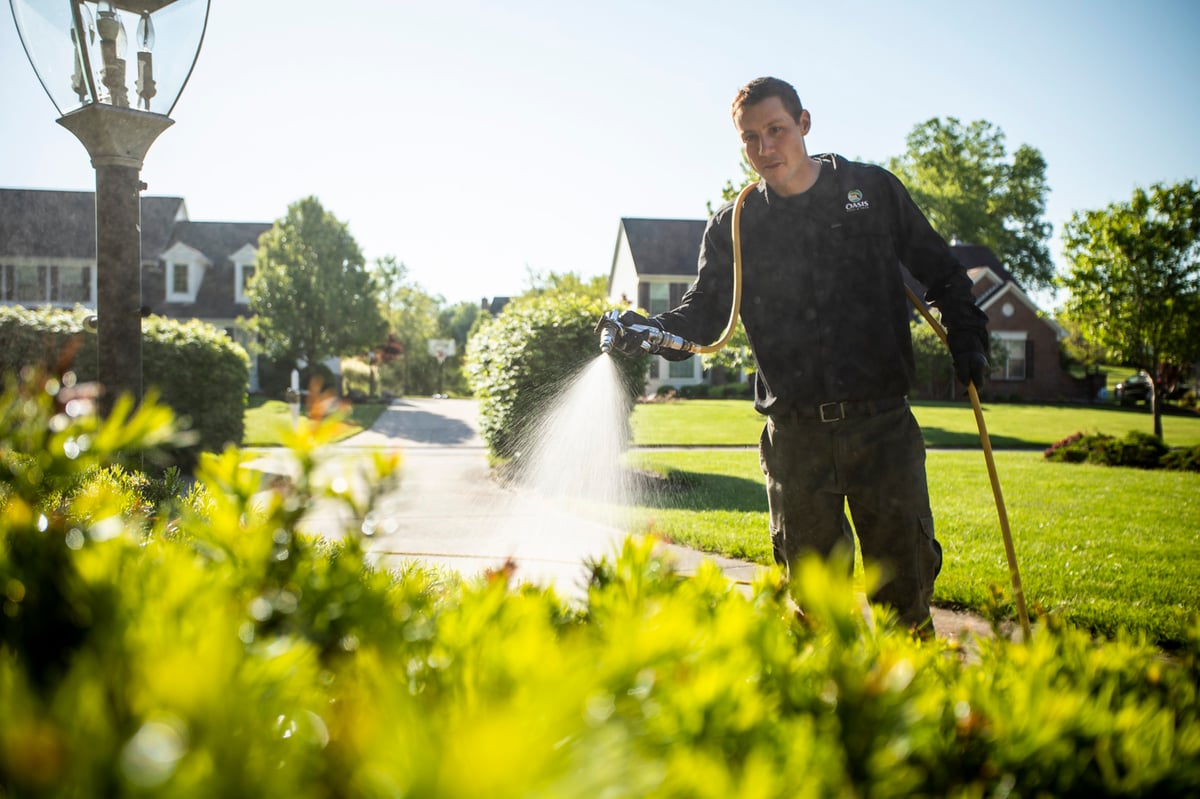
As a homeowner on your property each day, you have the greatest ability to notice these issues and monitor your trees and shrubs more closely. If you suspect something is wrong, contact a professional tree service. A reputable service would be happy to diagnose these issues for you.
Once properly diagnosed, the proper solution can be put into action.
Prevent Tree and Shrub Pests
Another key issue impacting tree and shrub care are tree and shrub insects.
Unfortunately, just like diseases, there are a number of tree and shrub pests in Ohio that could impact the health of your plants.
Let’s look at what you ought to know.
Common Tree and Shrub Pests in Ohio
There are many different tree and shrub pests in Ohio but let’s look at some of the most common ones.
- Japanese Beetles: While it is a relatively small pest, the Japanese Beetle can be incredibly destructive. One of the biggest problems with the Japanese Beetle is that it’s a “pest” its entire life. They start their lives in the late summer as lawn grubs, feeding on your grassroots. Then they ultimately become adults that feed on your trees.

- Bagworms: True to its name, the bagworm is best recognized by the casing or “bag” that this pest forms from a combination of silk and pieces of the host tree’s foliage. Bagworms harm trees by feeding upon its needles and leaves.
- Lace Bugs: At ⅛ inch long, the Lace Bug is small. But don’t let its diminutive size and pretty name fool you. This landscape plant insect literally sucks the life out of your tree. Using their piercing mouthpieces, Lace Bugs draw all of the nutrients from your tree or shrub’s leaves until the plant is eventually destroyed. The Lace Bug has clear wings with dark patches that resemble a lace pattern. Its eggs appear as black or brown dots on the underside of your tree’s leaves.
- Aphids: Under a quarter-inch in size, aphids have pear-shaped bodies with long antennae and include a variety of species which range in color from white, black or brown to gray and green. Aphids feed on tree sap.
- Scale: Another of the sap-feeding landscape plant insects group, scale insects use their piercing-sucking mouthparts to drain fluids from your plants. The result of scale insects in the landscape can be seen in yellowing or wilting leaves.
- Spider Mites: Of the tree and shrub mites, Spider Mites are a big concern. Whereas some mites are actually good and help to feed on the bad mites, Spider Mites are aggressive attackers that use their piercing mouthparts to feed on the chlorophyll in plants.
Tree and Shrub Insect Control
Implementing the best solutions starts with identification. The trouble is, some of the symptoms of tree and shrub insects attacking your tree can be the same as other issues, including tree and shrub diseases and environmental stressors.
But once a professional does diagnose an insect problem, they can implement the best tree and shrub insect control solution (depending upon what pest you’re dealing with).
Though it’s not a magic bullet cure, many issues can be remedied with the appropriate tree and shrub care solution. And with a comprehensive program, many problems can even be prevented in the first place!
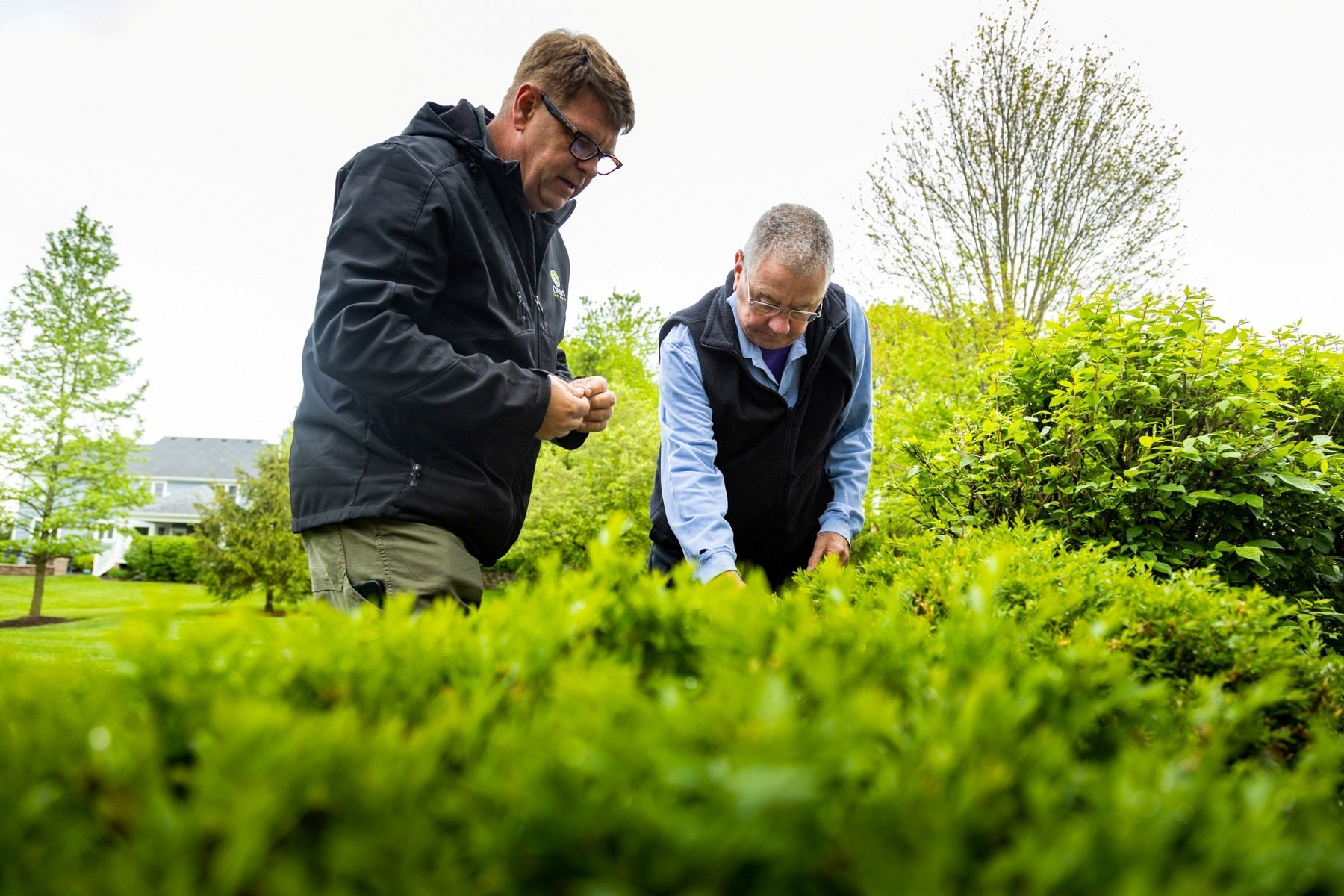
Ultimately, that’s the goal that you want to aim for…to prevent tree and shrub insects before they can become a major problem. Pest control for trees and shrubs should take a preventative approach as oftentimes these insects can be highly destructive. You don’t want it to be too late.
The best strategy is to employ a program that will proactively manage these issues and provide optimum soil health along with regularly scheduled treatments to keep plants healthy.
Tree and Shrub Pruning and Trimming
Though not a service offered by Oasis Turf & Tree, we also want to mention the importance of proper tree and shrub pruning as this will also impact the health of your plants. In fact, pruning errors can lead to a decline in your plants that may be difficult to fix.
Pruning is an important cultural practice to care for a plant. Pruning is the process of making strategic cuts to remove dead or dying plant material to improve the overall health of the plant.
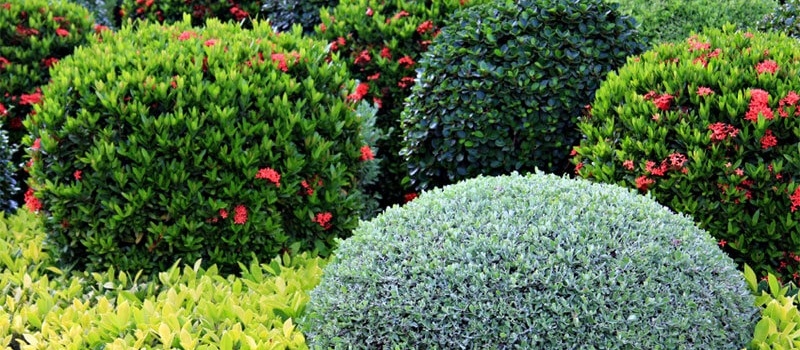
Terms like shearing and trimming are sometimes used interchangeably with “pruning,” but incorrectly. Shearing and trimming refer to how you’d clean up a shrub such as a hedge. Care isn’t being taken to strategically cut off dead material, this has more to do with shaping.
Since proper pruning does impact the tree or shrub’s health, it’s important that you take care to understand best practices. Or, you can work with an arborist that does this type of work.
Watering Your Trees and Shrubs
Water is the lifeblood of all living things and in order to keep your trees and shrubs healthy, you need to water them (particularly when Mother Nature isn’t providing ample rainfall).
However, people often fail to realize how important proper watering is, especially in regard to avoiding stress and disease.
How to Water Trees and Shrubs
As far as how to water trees and shrubs, the best approach is to mimic the type of “soaking” that an ample rainfall would provide. You want the water to reach the roots and be taken in.
Keep in mind that there is no reason to water the leaves of your trees and shrubs.
.jpg?width=1280&name=CC-water-815475_1280%20(1).jpg)
In fact, watering from overhead may actually aggravate certain diseases. Instead, water at the roots using a soaker hose, which is an effective way to water since they’re porous and release water slowly. You could also use a regular hose set on a slow trickle or a drip irrigation system if you have one.
Avoid overwatering to the point where the soil is perpetually soggy as this can contribute to soil-borne diseases like root rot.
Best Time of Day to Water Trees and Shrubs
Typically, the best time to water trees and shrubs is in the early morning hours. This gives your trees and shrubs a nice reservoir of water to use throughout the heat of the day.
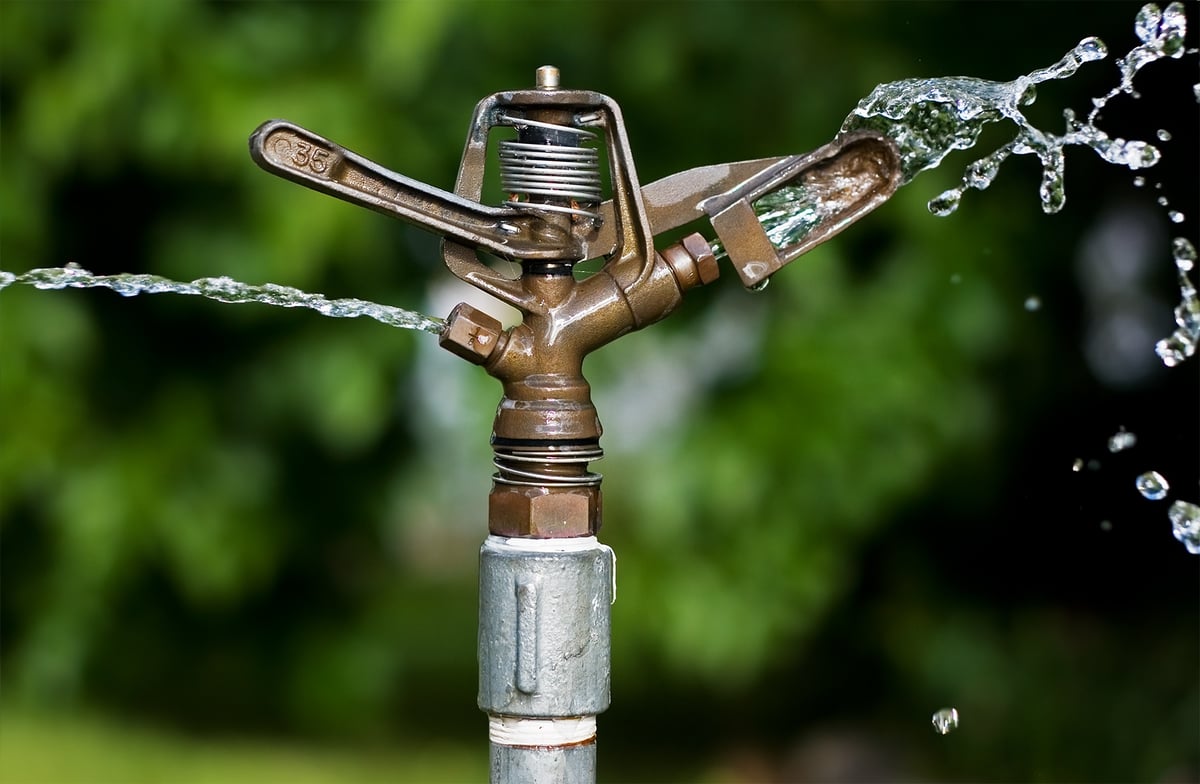
You also avoid too much of the water being immediately evaporated as might happen in the heat of the day during the summer.
Avoid watering at night in case water does splash onto the foliage. Water that sits on the foliage during a hot humid night could be more susceptible to growing fungus.
Hiring Tree and Shrub Care Services in Cincinnati, Dayton, OH, and Northern Kentucky
Hopefully these tree and shrub care tips have helped set you on the road to success. However, at the end of the day, your results are going to boil down to the tree and shrub service that you choose.
While you might think about tackling DIY tree and shrub care, it will be very difficult to get the same high-quality results using store-bought products.
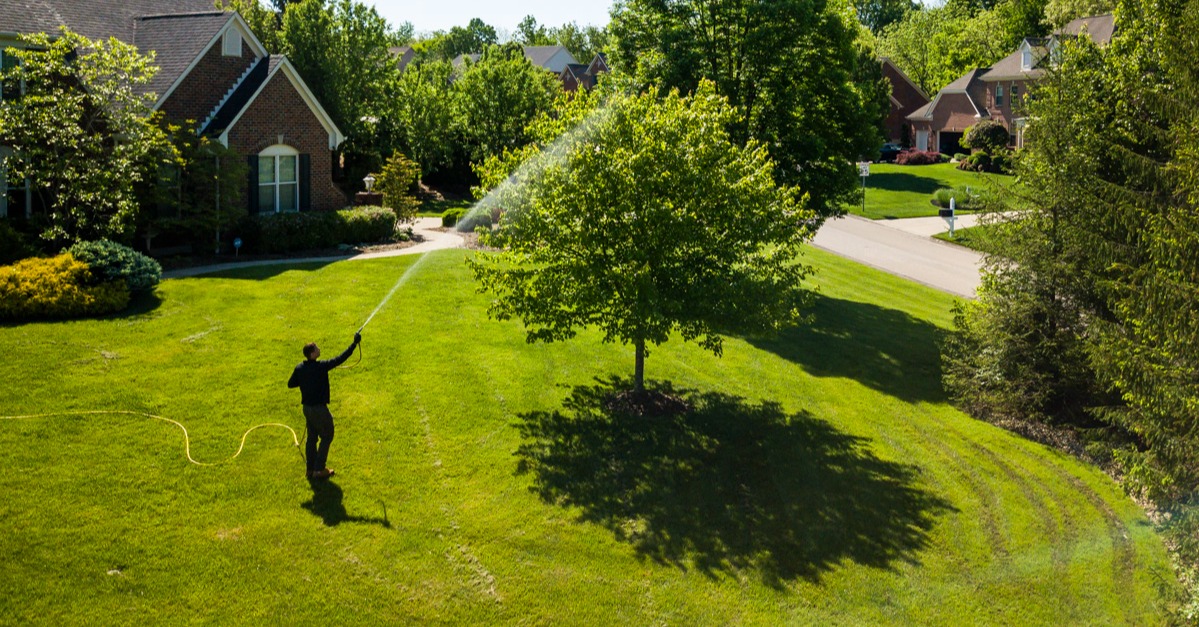
Still, you might be wondering, Do I really need professional tree and shrub care?
If you truly want the best for your trees and shrubs, then yes. And you should seek tree and shrub care companies that can meet your needs.
Most homeowners see the value of paying for regular care for their lawns, but the actuality is that your trees and shrubs represent a much larger investment. For example, a smaller property can improve from zero lawn (all dirt) to a nice lawn within a year’s time, for less than $1000.
A complete landscape of trees and shrubs, on the other hand, can take many years to mature—and may involve up to fifty times the cost. So it makes sense to protect your tree and shrub investment as readily as you do your lawn.
What to Look for in Tree and Shrub Care Companies in Cincinnati, Dayton, OH, and Northern Kentucky
When it comes to hiring a tree and shrub service, you know it’s important that you understand what to look for. You want to hire a company that truly knows their stuff. Here are a few things to look for in tree and shrub care companies.
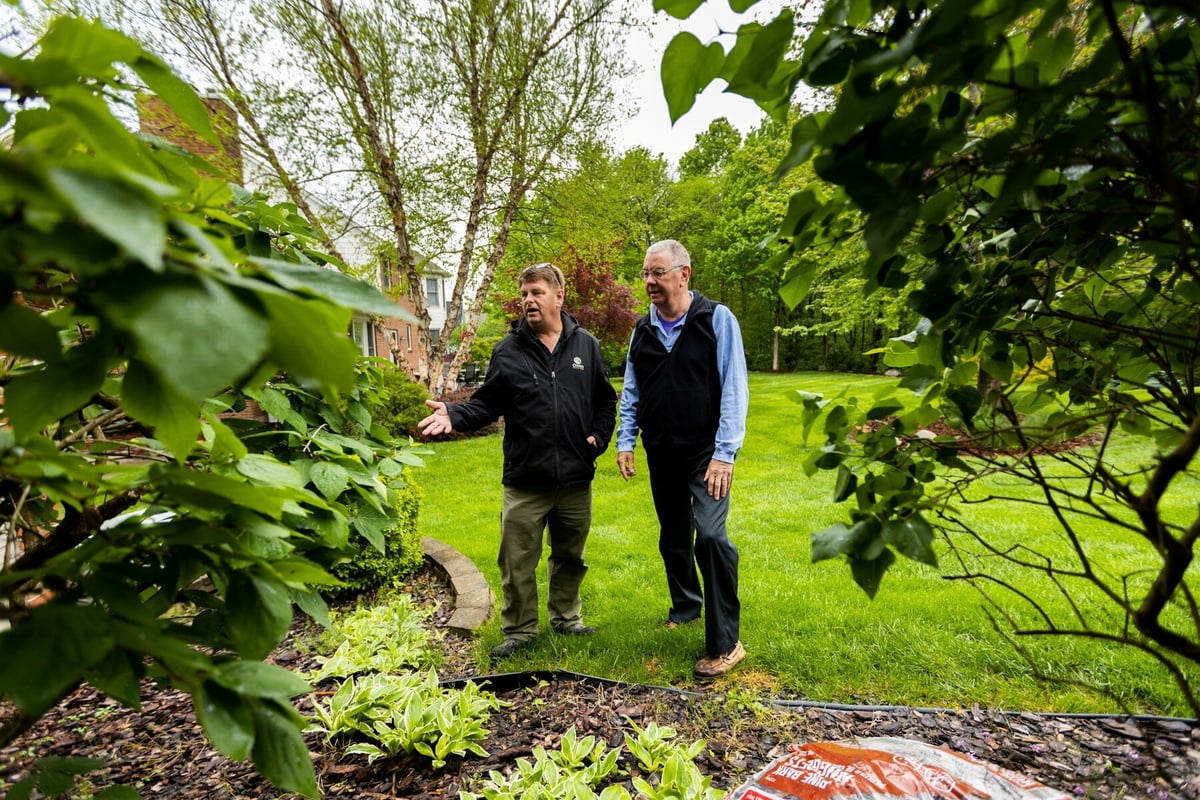
- Choose a company with experienced and licensed technicians. Tree and shrub care is complicated and even some pros can make mistakes. At Oasis, the majority of our technicians are not just registered but also licensed for Ornamental Pest Control. They have a lot of experience with this type of work which is important because tree spraying can be more complicated than lawn care. There are so many nuances involved, for example, one plant species can differ vastly from the next.
- Choose a company that will take a customized approach. With so many different types of diseases, insects, and mites attacking your trees, you want to choose a tree and shrub service that is going to customize their approach to what’s ailing your plants. Since different products may be needed for different pests, you also want to choose a company that has a variety of solutions in their arsenal. An effective program takes a multi-product approach.
- Choose a company that understands the value of soil health. Your best defense against insects and disease is to improve your plants’ overall health in the first place. This can be achieved by improving the health of your soil.
Your Wise Choice in a Tree and Shrub Care Program
We commend you for wanting the best in tree and shrub care and for wanting to learn more.
Whether you have new trees on your property, you’ve just moved, or you really want to step up your game in caring for your landscape, we want to see you get the results you desire.
By making a wise choice in a tree and shrub care program, you’ll be on your way to having healthy and thriving trees and shrubs that make your landscape beautiful. That means getting the maximum value and enjoyment out of your property that you deserve.
If you want to learn more about tree and shrub health care for your Cincinnati, Dayton, OH, or Northern Kentucky home, call us today at 513-697-9090 to get your quote, let us help you choose a stand-alone program or bundle it with other services, and then sit back and relax knowing you’re in good hands.
Image Source: garden hose
